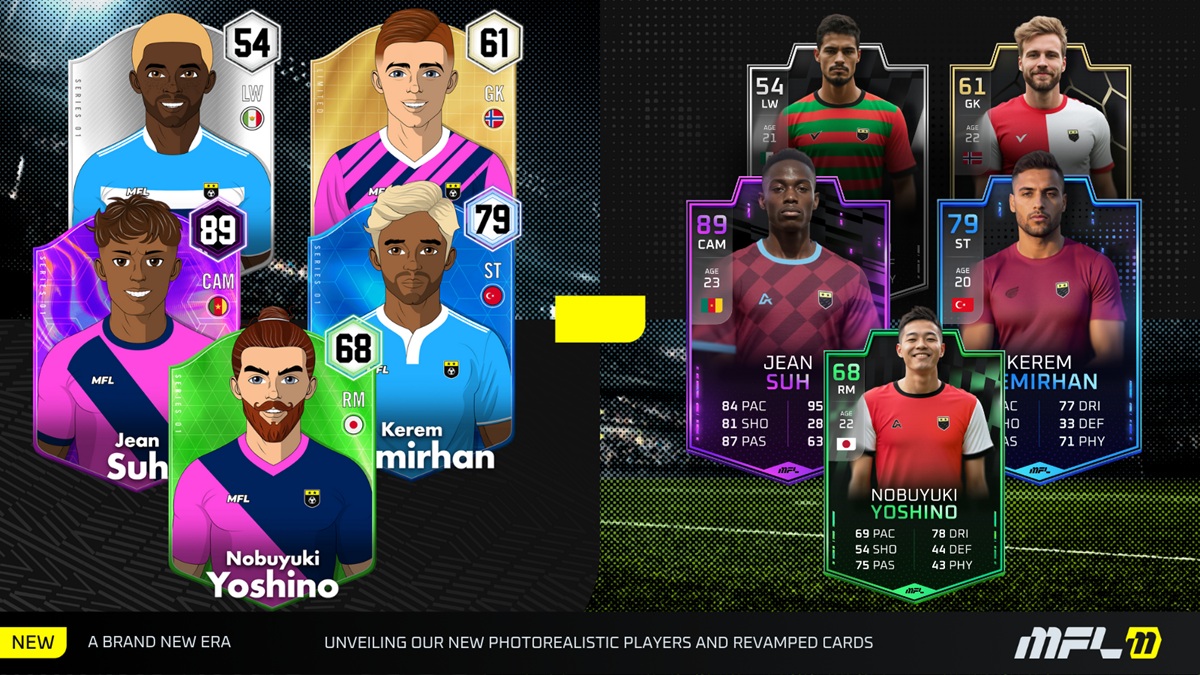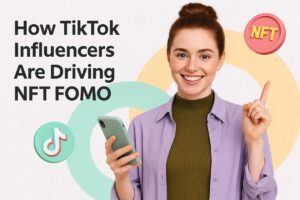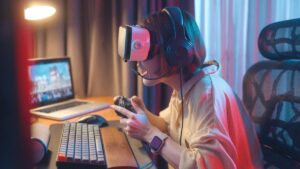Revolutionizing Web3 Gaming: MFL Unveils GenAI Soccer Players

MFL Transforms Soccer Game with Generative AI for Realistic Player Designs
Introduction to MFL’s Evolution
MFL, formerly known as the metaverse Football League, is revolutionizing its soccer game by leveraging generative AI to enhance player appearances. This transformation affects 180,000 players, moving away from the previous cartoonish designs to more lifelike representations.
- Introduction to MFL’s Evolution
- The Journey of MFL
- The Motivation Behind the Change
- Enhancing Immersion and Engagement
- MFL’s Strategic Approach to Web3
- Behind the Scenes: The Technology
- The Character Generation Process
- Refining Player Features
- Quality Control Measures
- The Impact of the Transformation
- Competitive Edge in Web3 Gaming
- Financial Sustainability and Growth Strategy
- Future Aspirations and Market Positioning
- Rebranding for Market Perception
The Journey of MFL
Founded in 2021 amidst the excitement surrounding the metaverse and blockchain, MFL initially featured simplistic cartoon characters for its players. However, in a matter of days, the company successfully reimagined every player with a more realistic aesthetic, as shared by CEO Mathurin Blouin in a recent interview.
The Motivation Behind the Change
Blouin emphasized that the redesign was not merely a trend-chasing effort but a necessary evolution for the game’s universe. The previous stylized characters limited the immersive experience, and this overhaul aimed to create a more authentic football culture within the game.
Enhancing Immersion and Engagement
The goal was to craft a world that feels genuine, where players could seamlessly integrate into real football culture. Blouin noted that achieving photorealism goes beyond visuals; it alters perceptions and enhances the professional feel of MFL. This shift also paves the way for dynamic storytelling and customization options, including personalized jerseys, player development, and AI-generated content.
MFL’s Strategic Approach to Web3
MFL is steering clear of Web3 tokens to mitigate speculation, focusing instead on monetizing through NFTs while appealing to mainstream audiences with a hybrid Web2/Web3 model. With three years of operations under its belt, MFL aims to reach a revenue target of $2 million by the end of 2025.
Behind the Scenes: The Technology
The company has developed an extensive network of over 400 interconnected processing units, each serving a specific function in the character generation process. This pipeline, built entirely with open-source tools, allows MFL to maintain full control and flexibility without relying on external AI services.
The Character Generation Process
Each player image undergoes multiple stages, starting with a prompt engine that randomizes traits like body type, hairstyle, and expression to create a diverse universe. These prompts are processed by over 100 high-performance GPU pods, generating base portraits that reflect anatomical accuracy and regional diversity.
Refining Player Features
Following the initial generation, a facial refinement process enhances emotional realism by polishing expressions and correcting inconsistencies. The creation of player kits, or jerseys, is facilitated by an in-house 3D tool that designs numerous club shirts with unique patterns and logos.
Quality Control Measures
To ensure high-quality output, MFL employs a two-tier quality control system. An automated check identifies obvious errors, followed by a human review team that utilizes a custom moderation panel. Any rejected images are regenerated automatically, eliminating manual intervention and bottlenecks.
The Impact of the Transformation
The transition from cartoonish to realistic player designs signifies a significant leap for MFL. Each of the 180,000 footballers is now linked to their in-game identity, ready for use across various formats, including video and social media. This evolution creates a vibrant world that embodies the spirit of MFL, complete with lore and continuity.
Competitive Edge in Web3 Gaming
Blouin believes that the enhanced player engagement positions MFL to compete effectively with larger games in the Web3 space. He asserts that MFL is a unique example of a fully original Web3 game that is not only functional but also scaling creatively with technical depth.
Financial Sustainability and Growth Strategy
Since its inception, MFL has operated without external funding, generating revenue through the sale of player and club NFTs. The game’s structure mimics real football leagues with six-week seasons, encouraging player engagement through club management and recruitment.
Future Aspirations and Market Positioning
MFL aims for mainstream adoption by targeting Web2 users and prioritizing enjoyable gameplay over speculative elements. The growth strategy includes increasing visibility through organic referrals and influencer marketing.
Rebranding for Market Perception
Despite its full name containing “metaverse,” MFL primarily uses the acronym to avoid the negative connotations associated with the term. While Blouin acknowledges the potential of the metaverse, the company’s focus remains on utility and gameplay rather than fully immersive 3D experiences.







